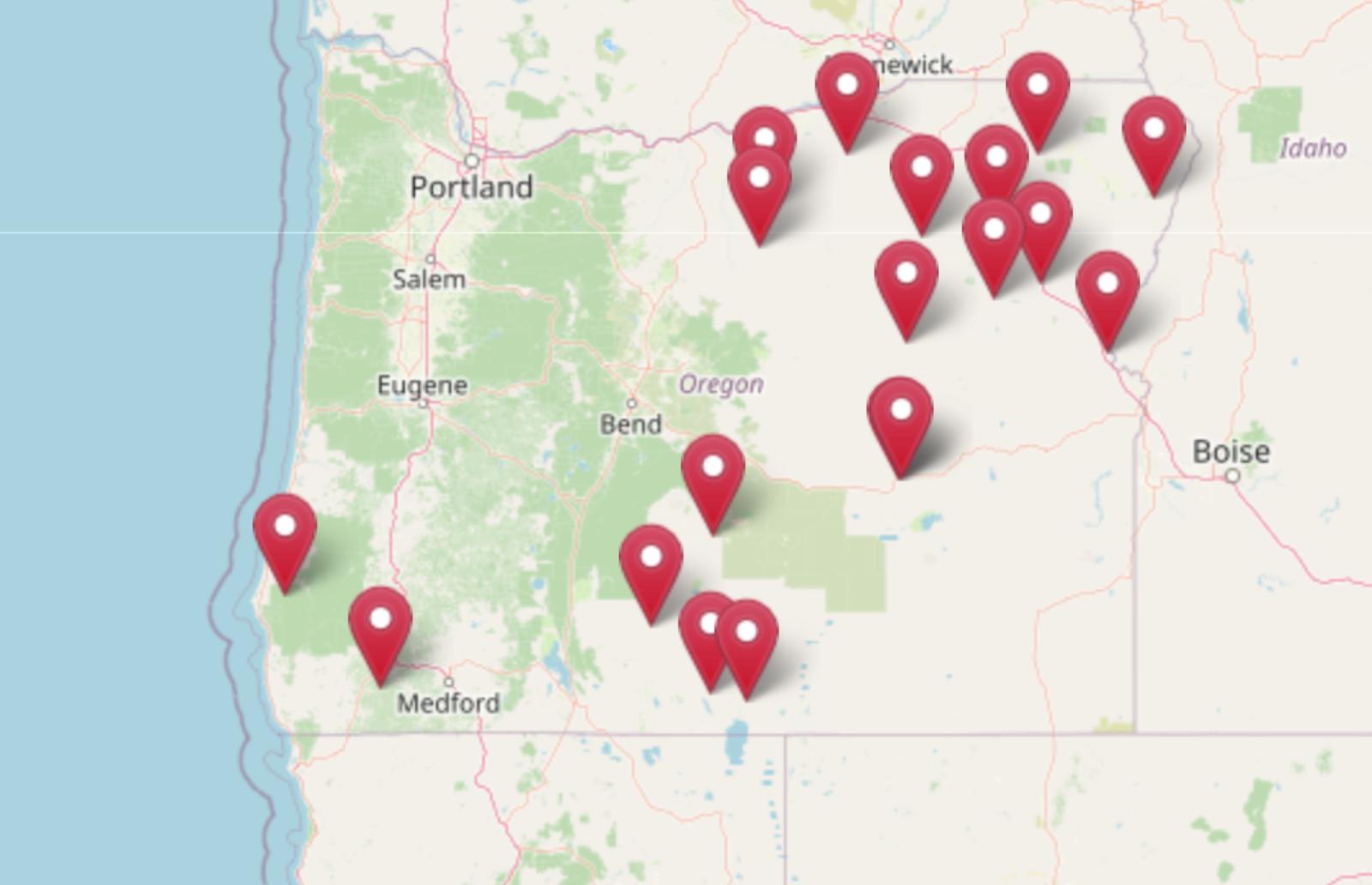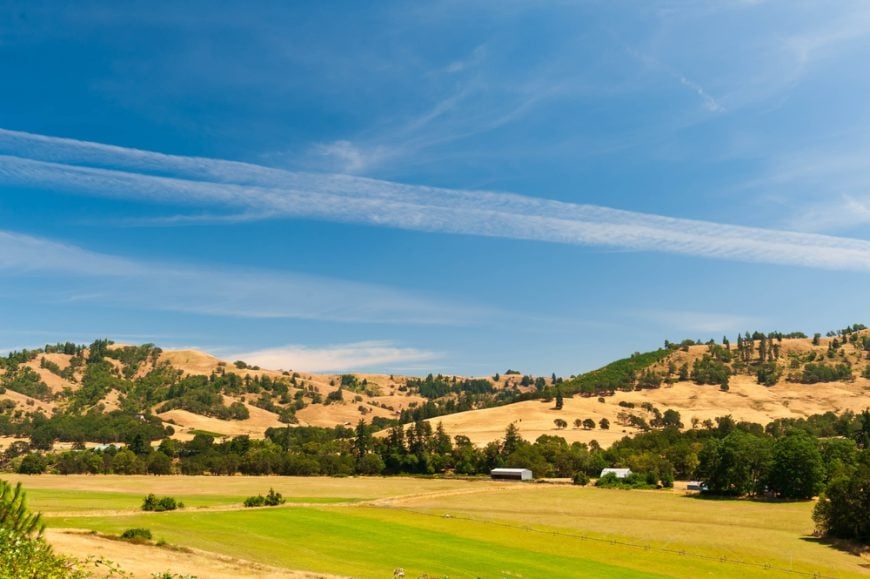
Nestled within Oregon’s rugged interior, the region often referred to as the Western Pine Belt stretches like a living tapestry of towering Ponderosa pines, their sun-dappled canopies whispering tales of solitude and survival. While not officially marked on maps, this belt cuts across Oregon’s mid-elevations, where crisp mountain air mingles with the scent of sun-warmed pine resin.
Here, scattered between forested ridges and rolling high-desert plateaus, lie 25 secluded towns—hidden gems that thrive quietly beneath the shadows of ancient trees. Each town offers more than just a place on the map; they are pockets of authenticity, where rugged landscapes meet resilient communities rooted in Oregon’s wild heart.
Whether you’re drawn by the serenity of dense forests, the charm of historic outposts, or the untamed beauty of rivers carving through basalt canyons, these towns offer an escape into nature’s embrace—far from the crowds, closer to the soul.
25. Buncom

Buncom feels like a whisper of a town preserved in time, a ghostly echo beneath the forest’s canopy. Once a bustling mining settlement, it now stands almost entirely abandoned—save for a few roofed relics of the post office, cookhouse, and bunkhouse that quietly guard the stories of its gold-rush past.
You might feel the hush of history in every plank and peeling paint, as though the ghosts of prospectors still wander the creek beside the old stampers. Wander among the remaining structures under a canopy of pines, lean close to hear the creek’s murmuring, breathe in the musty sweetness of aged wood.
A single, unpaved forest road leads here and few visitors come—making every footstep feel like trespass into a forgotten era. You can stand where dreams were born of gold and feel the pulse of ambition and abandonment alike. It’s the kind of place that reminds you how quiet the world can be.
Where is Buncom?
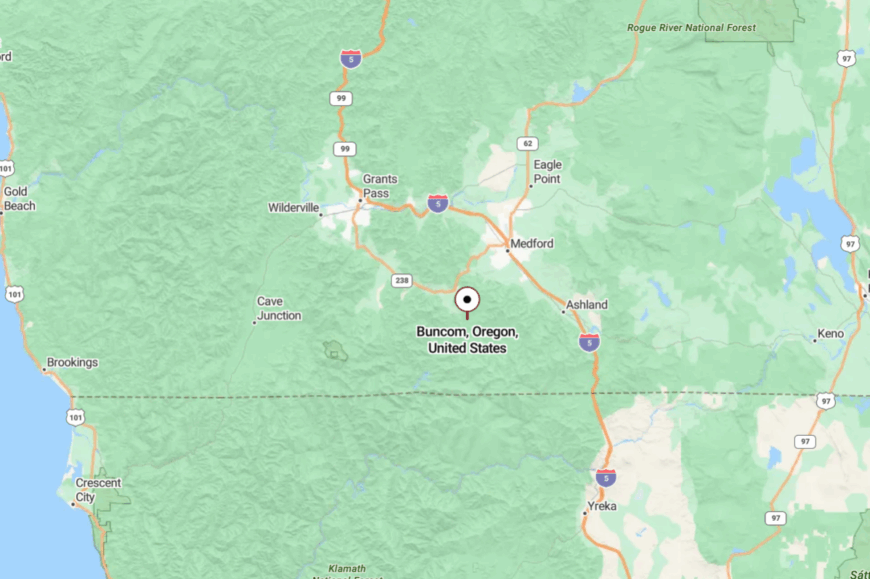
Tucked away in southwestern Oregon’s rugged hills near Jacksonville and Medford, Buncom lies hidden off Forest Road 546—down a winding, unpaved mountain lane that few dare to navigate. It sits near Sterling Creek, among thick evergreens that swallow the sound of engines and footsteps alike.
The drive is a slow descent into stillness, with only the rustle of pine needles for company. It’s close enough to reach, but far enough to feel like you’ve stepped out of time.
24. Golden
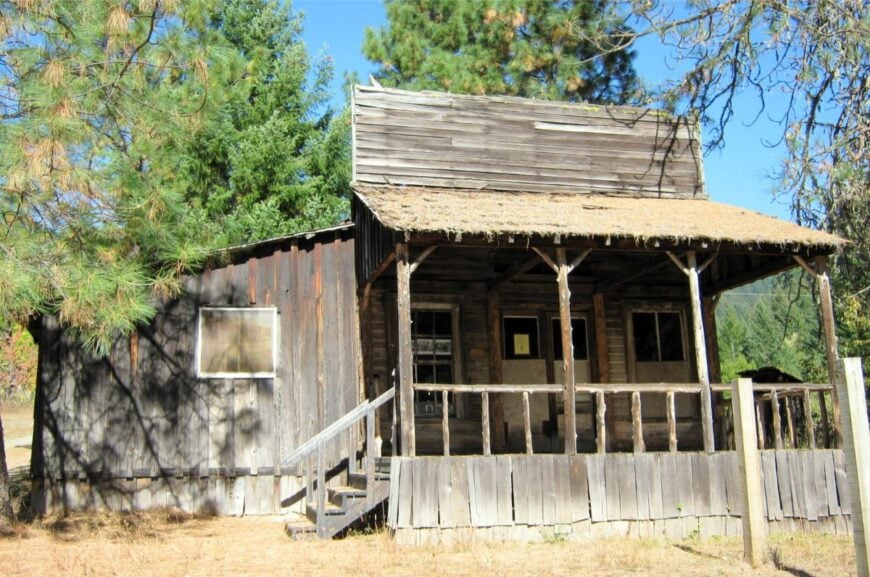
Golden is the kind of ghost town that wears its past with pride and a bit of eerie charm, haunted not just by stories but, locals say, by lingering spirits. Abandoned schoolhouse, general store, and a chapel stand silent on a grass-covered rise—now part of a historic district that feels suspended in sepia tones.
You might wander through the empty buildings and feel a sudden chill, or hear laughter in the shadows—everyone tells you it’s the wind, but you wonder. The place is nestled among thick forests, far from major roads, where every breeze seems to carry a whisper.
The only life here lives in the moss clinging to the rotting boards and the silence that grows deeper with every step. It’s a place where the past still breathes, and you can almost touch it. It’s the kind of place that reminds you how quiet the world can be.
Where is Golden?
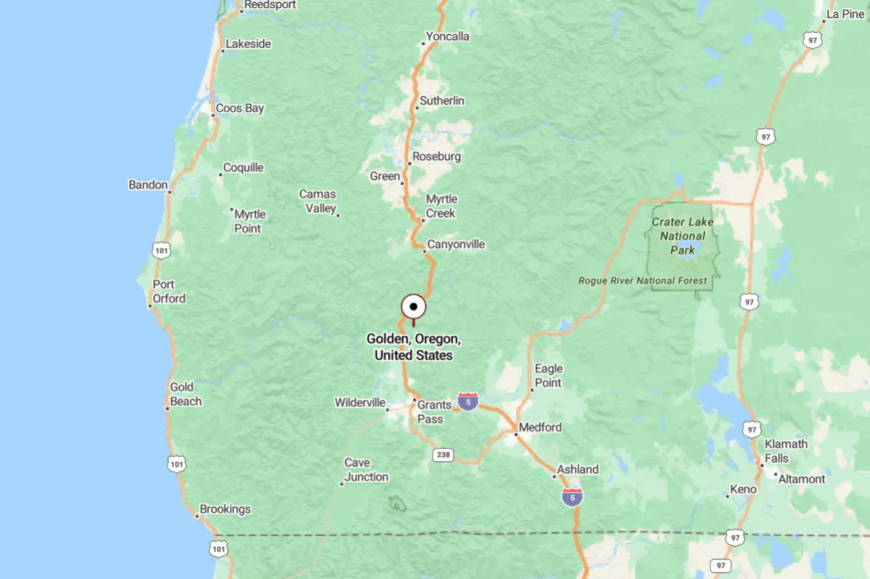
Golden perches in southwestern Oregon’s Coast Range, not far from Alsea or Toledo, yet hidden enough to feel worlds away. You reach it by turning off Highway 34 onto a gravel forest road that narrows as you go deeper.
Surrounded by firs and ferns, the town emerges with little fanfare—just a row of weathered buildings against a mossy green backdrop. It’s close enough to find, but far enough to feel like you’ve left everything behind.
23. London Springs: Warm Waters and Wildflower Fields
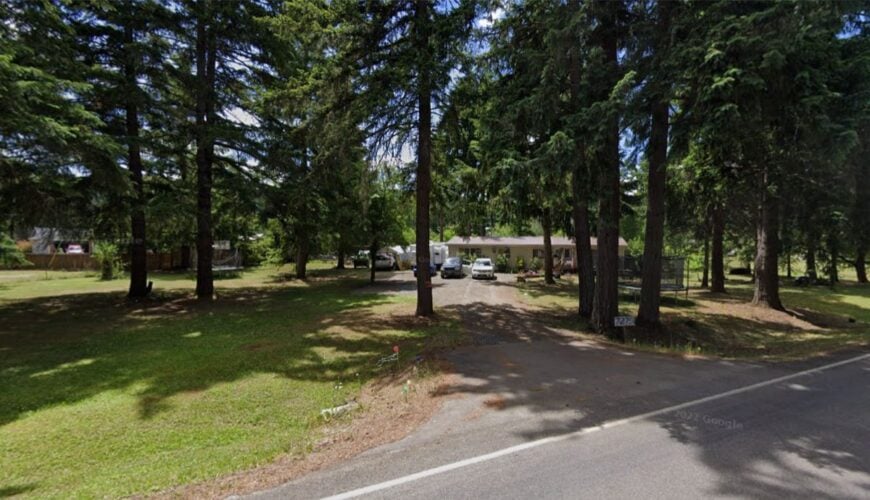
Tucked away in a hidden pocket of Lane County, London Springs is a quiet valley community best known for its warm springs and slow pace of life. Surrounded by flower-dappled meadows and fir-covered ridges, it feels like a place the world skipped over—but in the best way.
The nearby Brice Creek Trail offers waterfalls, swimming holes, and forest paths that wind beneath sun-speckled canopies. Locals garden, build, or simply tend the quiet, their homes scattered among old orchards and gentle hills. While there’s no town square, there’s a sense of shared solitude that binds the valley together.
The land here speaks in a soft voice, and if you stay long enough, you start to hear it. It’s the kind of place that reminds you how quiet the world can be.
Where is London Springs?
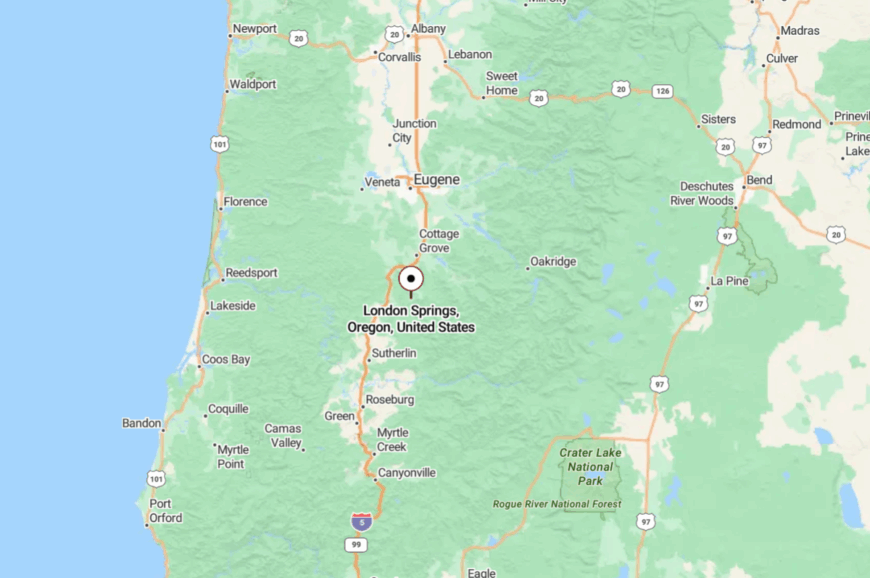
London Springs lies about 25 miles south of Cottage Grove in Lane County, accessible by taking London Road deep into the wooded foothills. The route meanders past farmland, old homesteads, and hidden creeks before opening into the valley.
It’s not marked by signs or tourism—just a slow unfolding of trees and sky. You’ll know you’ve arrived when the air gets sweeter and time seems to stretch.
22. Lorane: Vineyards, Fog, and Forgotten Roads

Lorane rests quietly where the Willamette Valley fades into the Coast Range, a small hamlet framed by rolling vineyards, misty ridgelines, and gravel roads that seem to end in dreams. Its charm lies not in what’s there, but in what isn’t—no bustling commerce, no flashing signs, just an old store, a grange hall, and rows of vines soaking in the fog.
Early mornings arrive with dew on the leaves and the slow hiss of wind weaving through Douglas firs. Lorane is best known for its nearby wineries and scenic byways, but few travelers stop long enough to feel the rhythm of its hush.
Life here is a blend of farming, artistry, and soft retreat. It’s a place where seasons shape the calendar and neighbors wave, whether they know you or not. It’s the kind of place that reminds you how quiet the world can be.
Where is Lorane?
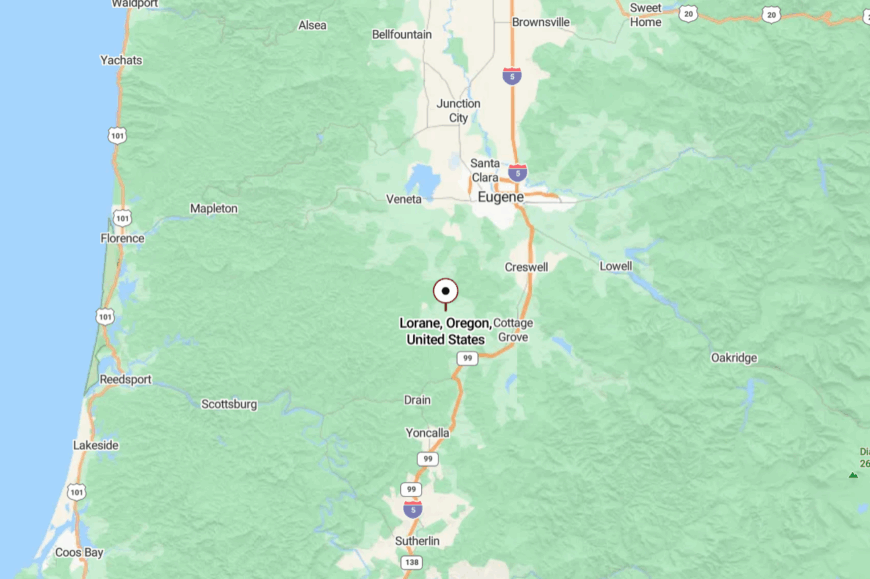
Lorane is tucked in western Lane County, about 25 miles southwest of Eugene via a winding route of rural backroads. Most visitors arrive by way of Lorane Highway or Hamm Road, which snake through vineyards and woodlands.
The town sits quietly between the valleys and the coastal foothills, never in a rush. It’s close enough to sip wine with company—but far enough to disappear if you want to.
21. Sitkum

Sitkum once was the perfect “halfway” stop—a stagecoach roadhouse, post office, and telegraph station woven into the bones of the Coos Bay Wagon Road. Today, nothing remains but the faint foundations and a few converted buildings—still standing by choice or by fate.
The forest’s growth has reclaimed the road; every footstep there echoes with travelers from another century. When you stand on the old site beside the East Fork Coquille River, you can almost feel the sway of horses, the clang of the telegraph, and the low murmur of travelers sharing tales.
It’s quiet now, but rich with echoes. It’s the kind of place that reminds you how quiet the world can be.
Where is Sitkum?
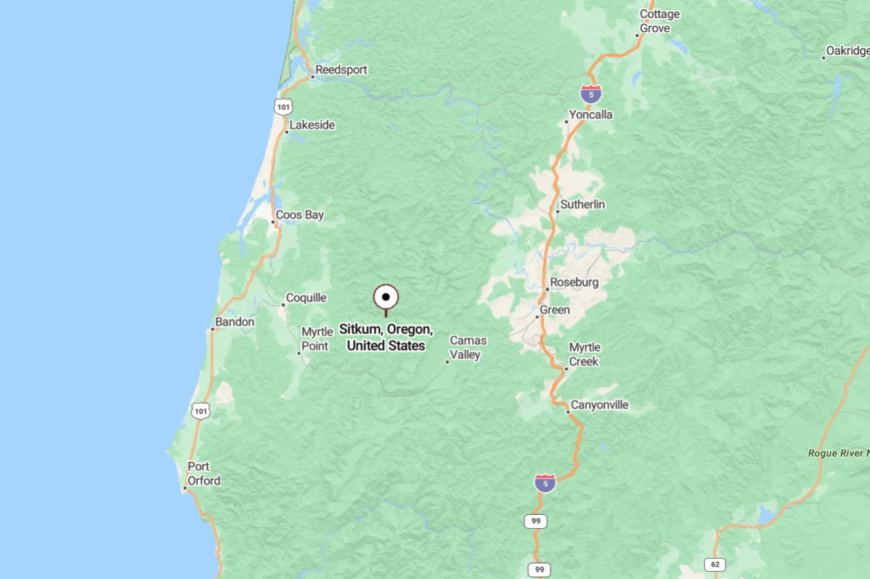
Sitkum lies in the Southern Oregon Coast Range in Coos County, about 27 miles north of the old town of Remote. You follow an overgrown forest track that once was the Coos Bay Wagon Road and wind toward the sound of the river through dense timber.
The deeper you go, the more you sense the stillness. It’s close enough to map, but far enough to feel entirely removed.
20. Hamlet
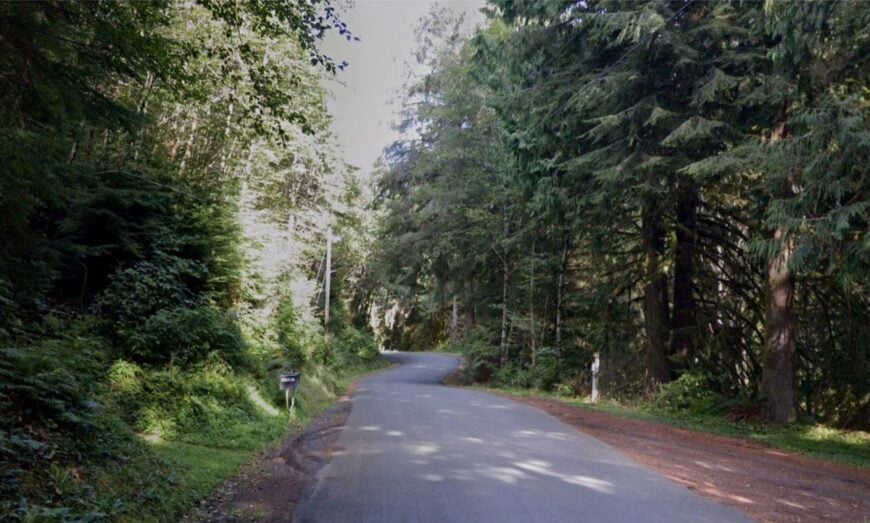
Hamlet may just live up to its name: a small, almost storybook cluster governed more by rivers and forests than by roads or commerce. Founded by Finnish settlers but never blossoming beyond a few homesteads and a school, it retains a hush as soft as moss.
No stores, no official center—just long-vanished footsteps, an old-school building turned gathering hall, and a cemetery dusted with pine needles. You can feel the hands that sowed gardens and built cabins in every breeze through the fir trees.
It’s quiet, simple, and unassuming—full of the small grace of things that don’t need an audience. It’s the kind of place that reminds you how quiet the world can be.
Where is Hamlet?
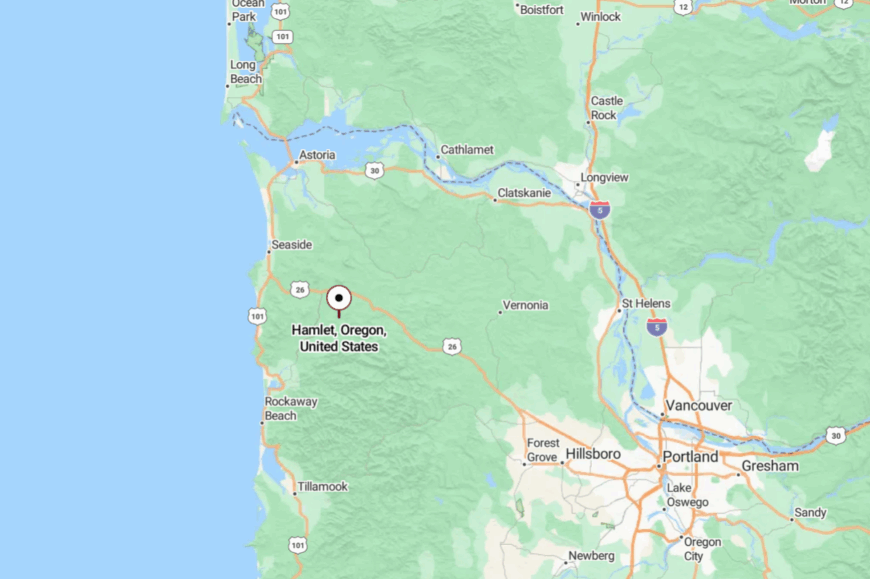
Hamlet is tucked into the northern Coast Range of Oregon in Clatsop County, southeast of Nehalem, near the forks of the Nehalem River. You reach it along a single winding forest road, flanked by stately pines and silent forest.
When you arrive, the few scattered homesteads feel like they’ve always been there and always will. It’s nearby in miles, but feels like a world apart.
19. Glenwood: A Sleepy Enclave Along the Willamette
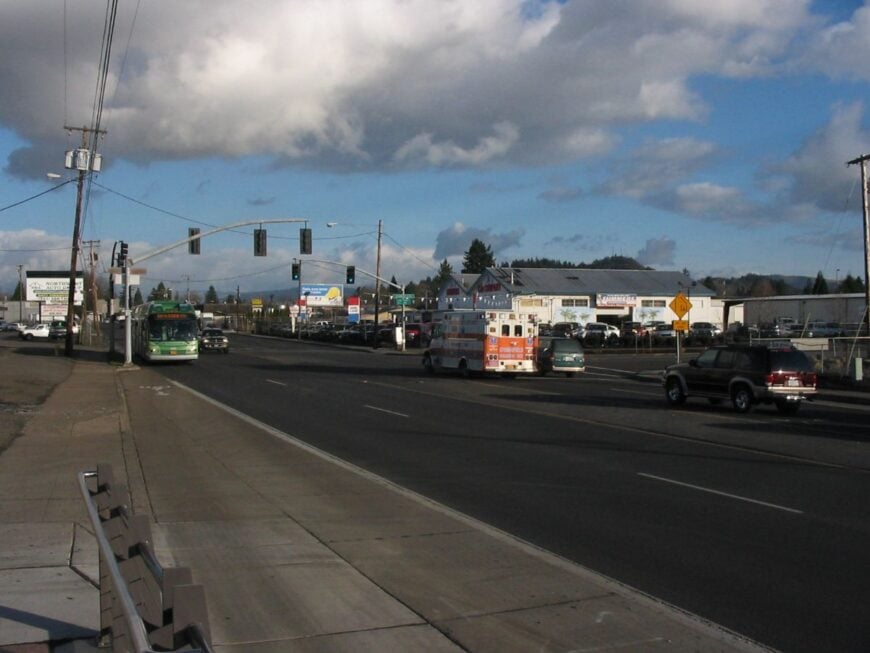
Glenwood lies in the gentle shadows of Oregon’s Coast Range, where the Willamette River winds quietly past fields and firs. Though just a whisper from Eugene, it feels far older and quieter, with one road curling through farmland and forest like a lullaby.
Days move slowly here—marked by early sunrises on the water and the hush of dusk settling over garden plots. A handful of homes, aging barns, and quiet boat launches speak to a life that values stillness over speed.
Glenwood isn’t made for sightseeing—it’s for staying, listening, and breathing. The surrounding land shapes the rhythm of life, and people here seem to move in tune with the river. It’s the kind of place that reminds you how quiet the world can be.
Where is Glenwood?
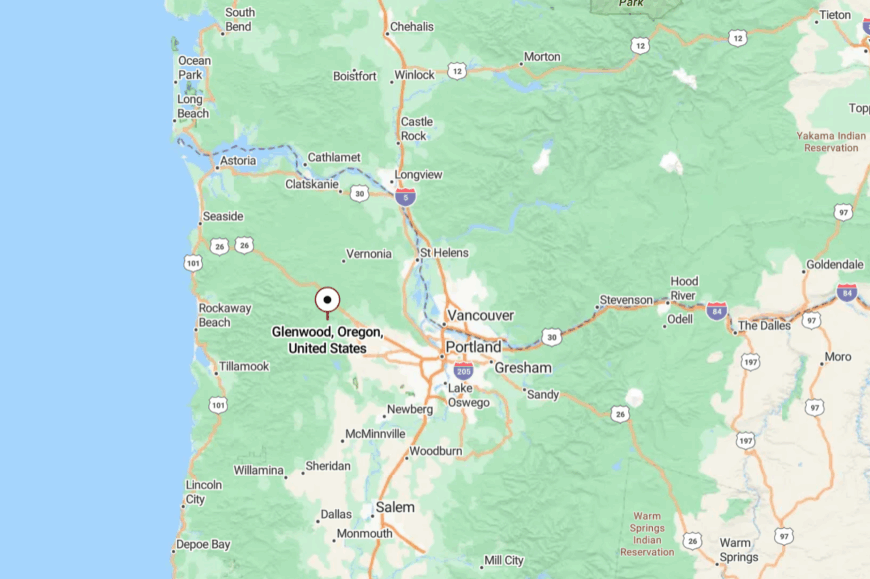
Glenwood sits about 15 miles northwest of Eugene, nestled beside the Willamette River in Lane County. You reach it by detouring off Highway 99, then tracing narrow roads past farmland and misty evergreens.
The town itself is unincorporated, tucked into riverbanks and backfields. It’s close enough to see city lights—but distant enough to forget they exist.
18. Blodgett: Where Rainfall and Forest Keep Watch

Blodgett is the sort of town you don’t stumble upon—you arrive there only if you’re meant to. A cluster of homes and a single schoolhouse hide beneath low-hanging clouds in a quiet valley of the Coast Range, where mist gathers in the trees like old stories.
Logging once gave Blodgett its rhythm, and you can still hear the echo of saws in the hush between rainstorms. Now it’s mostly a sleepy outpost for those who don’t mind the rain—or rather, who cherish it. Wildflower-dotted meadows lead into deep woods, and elk wander near fences without fanfare.
It’s not a tourist stop; it’s a pause in the world. It’s the kind of place that reminds you how quiet the world can be.
Where is Blodgett?
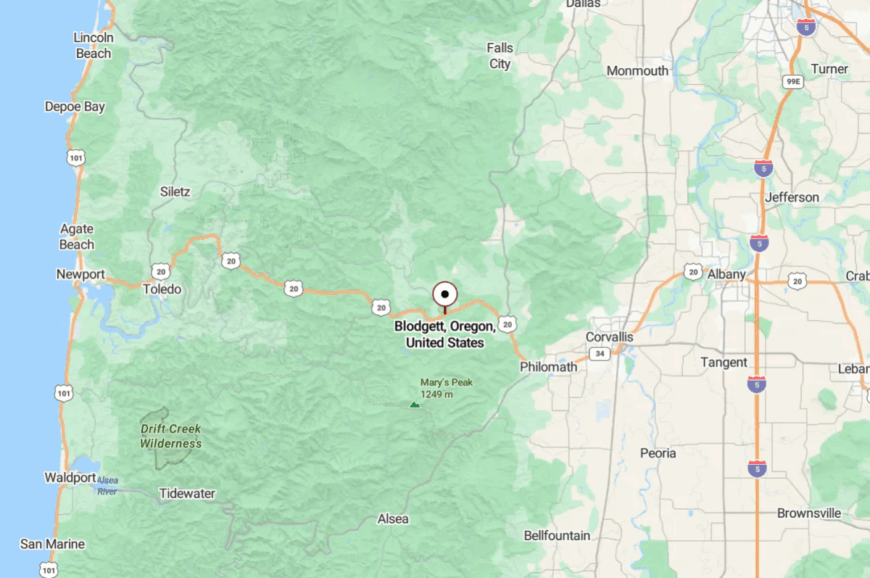
Blodgett lies in Benton County, about 20 miles west of Corvallis along Highway 20. The drive rolls through hills, forests, and farmland, the road narrowing as you leave city life behind.
The surrounding mountains rise like silent sentinels, wrapping the town in a cocoon of green. It’s a place passed by many—but truly seen by few.
17. Deadwood: Art and Solitude Deep in the Trees
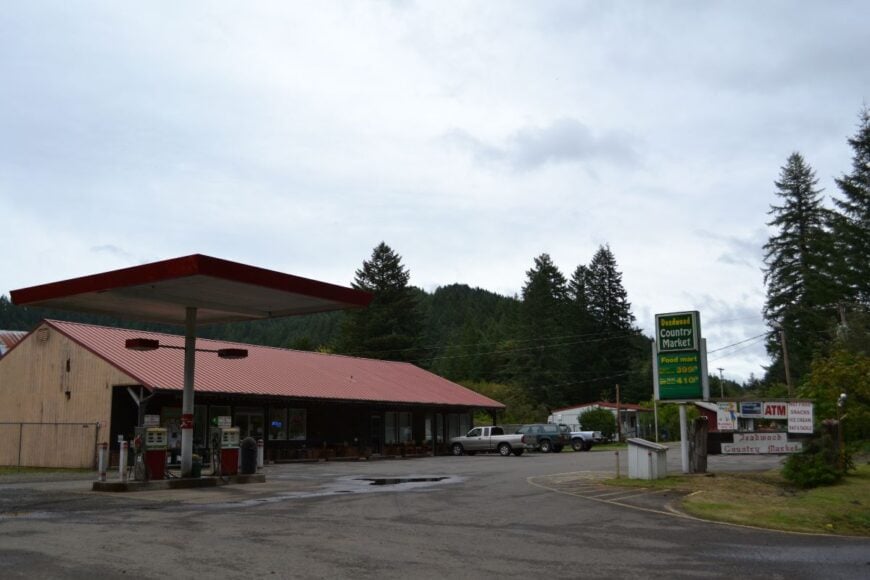
Deadwood may sound ominous, but there’s magic tucked into its mossy corners—a haven for artists, dreamers, and solitude-seekers. It’s a forest-bound community along a winding road, where creative souls have carved lives among ferns, fog, and the whispering Siuslaw.
The air is thick with cedar and inspiration, and yard sculptures or hand-painted signs hint at the residents’ wild hearts. Logging once ruled here, but now it’s creativity that thrives—woodworkers, weavers, and off-grid dwellers writing their own kind of quiet history.
It’s not a place with restaurants or gas stations; it’s a place with trails to nowhere and time to spare. Even the mail arrives slowly. It’s the kind of place that reminds you how quiet the world can be.
Where is Deadwood?

Deadwood is located in Lane County, about 30 miles inland from Florence and 25 miles west of Eugene. You get there via a winding drive along Highway 36, then onto a narrow road that twists along the Deadwood Creek.
Dense forest rises on both sides, cutting you off from the world’s chatter. It’s close enough to find, but far enough to get lost in.
16. Remote: A Place That Lives Up to Its Name

True to its name, Remote is more an idea than a town—a single outpost in the wild hills of Coos County, where the road curves through thick woods and never looks back. A lonely store, a few scattered buildings, and a post office that’s more symbol than service mark the edge of civilization.
Life here is measured in woodpiles, creek water, and long silences, where the only crowds are fir trees and crows. Travelers pull over just to take a photo of the highway sign—and then realize they want to stay a moment longer. It’s not just Remote by name—it’s remote in soul.
The sky feels wider here, and the roads hum with the absence of noise. It’s the kind of place that reminds you how quiet the world can be.
Where is Remote?
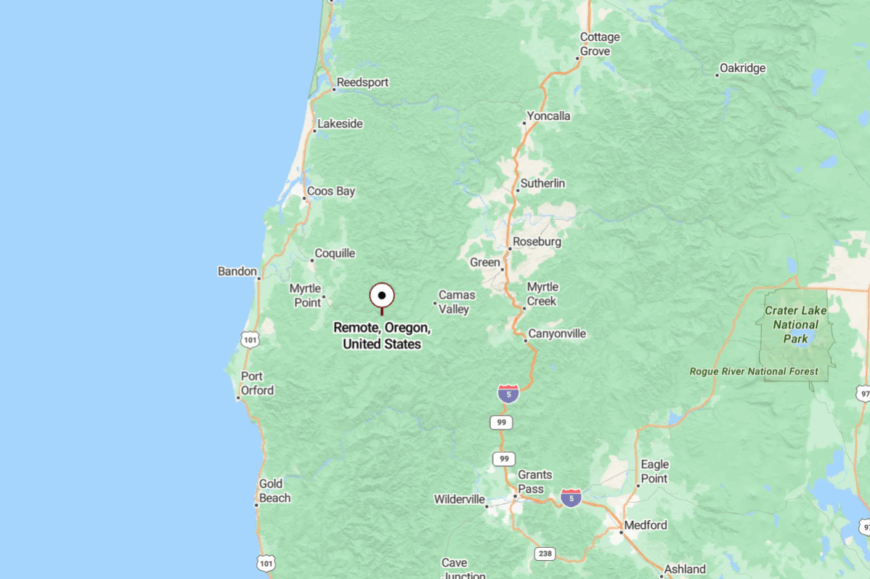
Remote sits along Highway 42 in the Coast Range of southwestern Oregon, about 25 miles east of Coquille. The drive in is gentle, flanked by steep forest ridges and the winding Middle Fork Coquille River.
It’s visible from the highway—but blink and you’ll miss it. Even so, the silence lingers long after you pass through.
15. Swisshome: Between River and Mountain, a Quiet Life
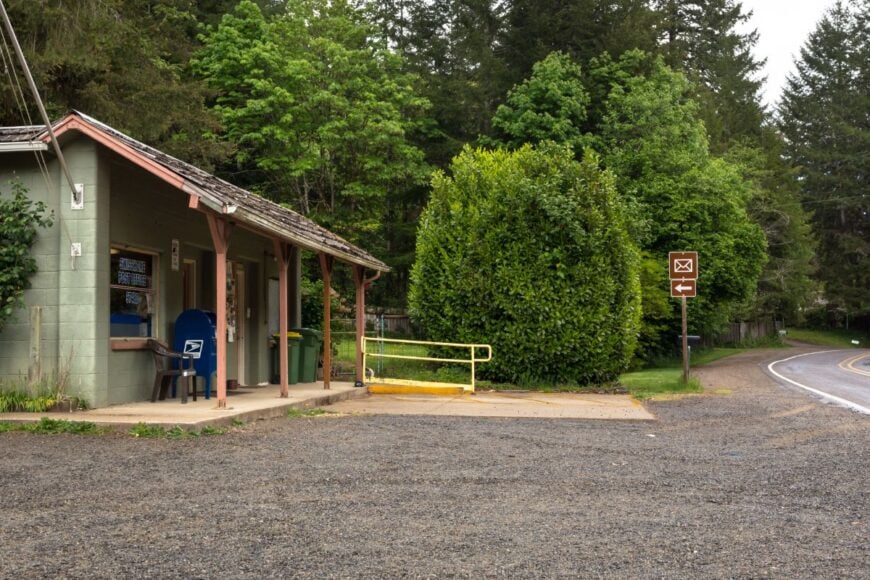
Swisshome sits tucked along the Siuslaw River like a secret someone decided to keep. With no stoplights and only a handful of structures, it’s more a scattering of lives than a town, where homes peek from behind thick salal bushes and trucks idle quietly by the water.
A historic covered bridge crosses nearby, offering the soft clatter of footsteps on old timber. Fishing, foraging, and woodcraft fill the days, and the nights are ruled by frogs and stars.
It’s a place for those who prefer the rustle of trees to the hum of cities. No rush, no noise, no need for much more. It’s the kind of place that reminds you how quiet the world can be.
Where is Swisshome?
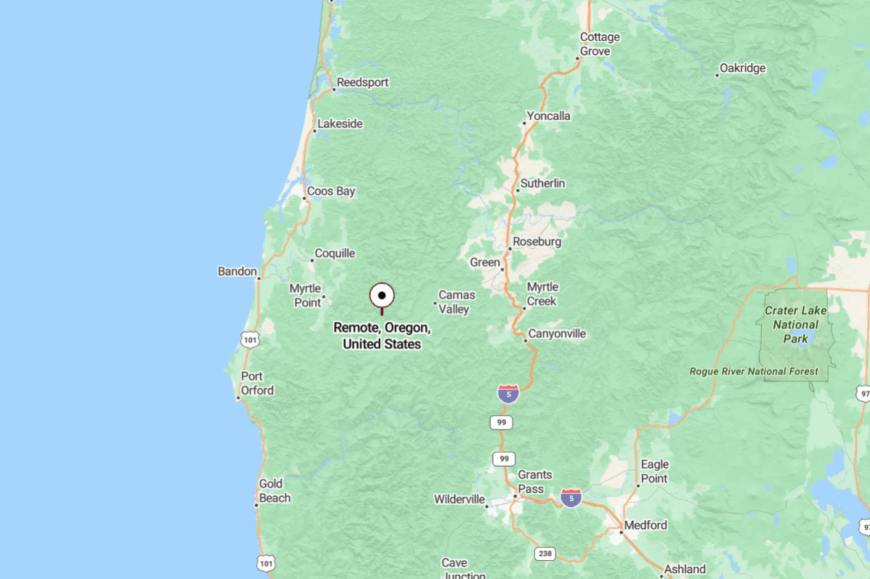
Swisshome lies in western Lane County, about 35 miles east of Florence on Highway 36. The road follows the curves of the Siuslaw River through misty forests and rocky outcrops.
It’s easy to pass by if you’re not looking—but those who stop rarely regret it. The town is held in the gentle grip of the forest and the flow of the river.
14. Wilderville: A Forested Bend in the Road
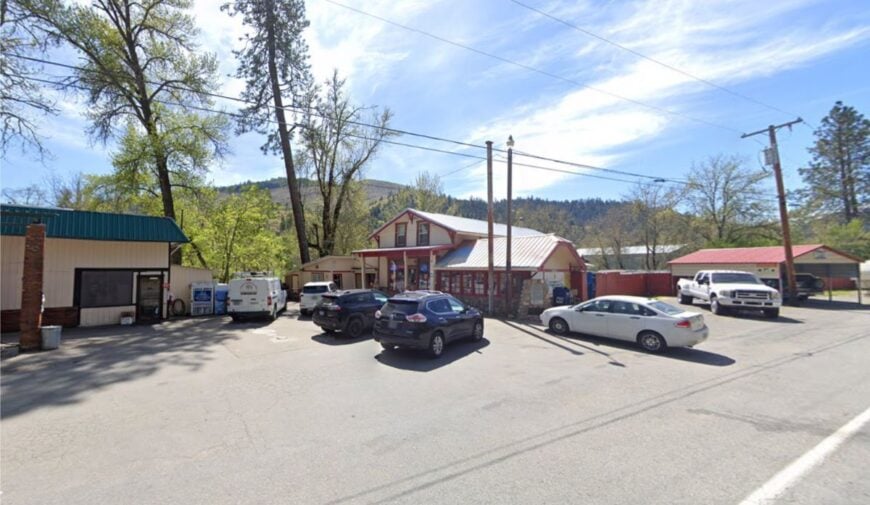
Wilderville feels like the breath between towns, cradled in oak-dotted hills and whispering Douglas firs just outside of Grants Pass. It’s not big, not loud, and not in a hurry—just a calm curve along Highway 199 where life unfolds at a different speed.
The old country store, a scattering of homes, and nearby creeks all hum with quiet familiarity. Hiking trails lead into forested foothills, and birdcalls echo across the morning mist. Many who live here do so deliberately—artists, retirees, and forest lovers creating their own pace.
It’s the kind of place that doesn’t need to be advertised—it just exists, peacefully. It’s the kind of place that reminds you how quiet the world can be.
Where is Wilderville?
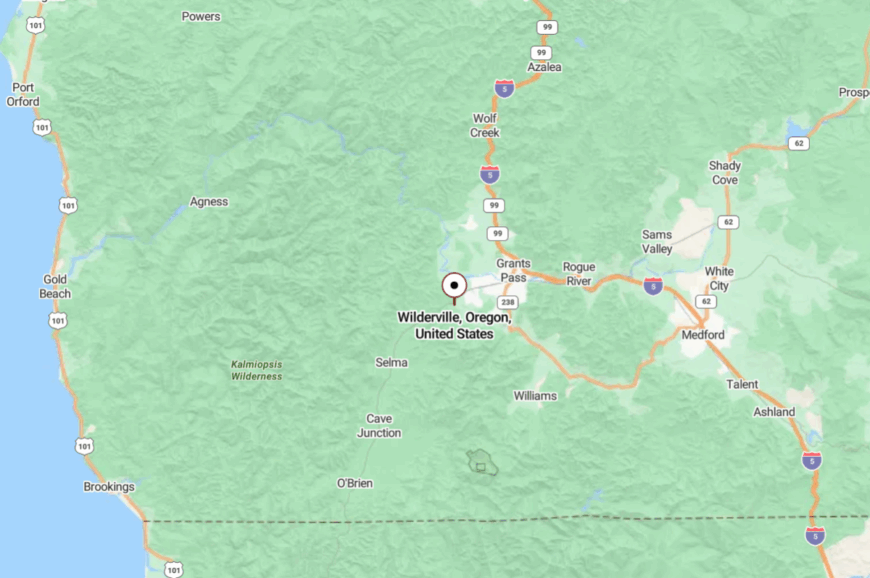
Wilderville is located in Josephine County in southwestern Oregon, about 10 miles southwest of Grants Pass along Highway 199. The road narrows and winds past creeks and hills as you leave the city behind.
You won’t find signs or stops—just a subtle shift in stillness. It’s not far in miles, but worlds away in mood.
13. Fall Creek: Waterfalls and the Whisper of Pines
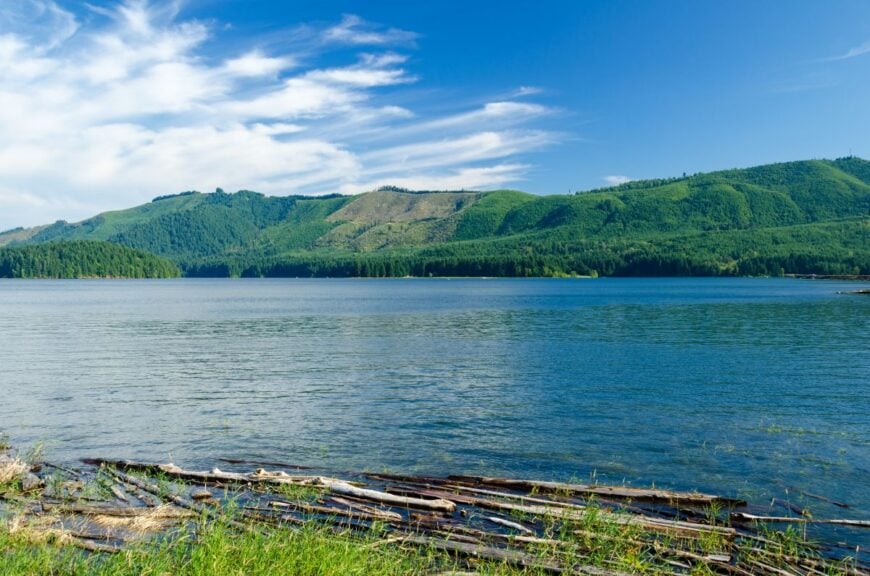
Fall Creek is where the air smells like cedar, and water sings its way through mossy ravines before tumbling into the creek that gives the town its name. There’s no real center—just cabins tucked under old-growth trees and narrow bridges that cross cold, clear water.
Trails like Fall Creek National Recreation Trail cut through green silence, and in summer, swimming holes glow with sunlight filtered through leaves. Locals value privacy, and the forest returns the favor, keeping life here hushed and unhurried.
There’s no traffic, no skyline, just soft hills, water, and the deep patience of trees. It’s the kind of place that doesn’t shout—it listens. It’s the kind of place that reminds you how quiet the world can be.
Where is Fall Creek?
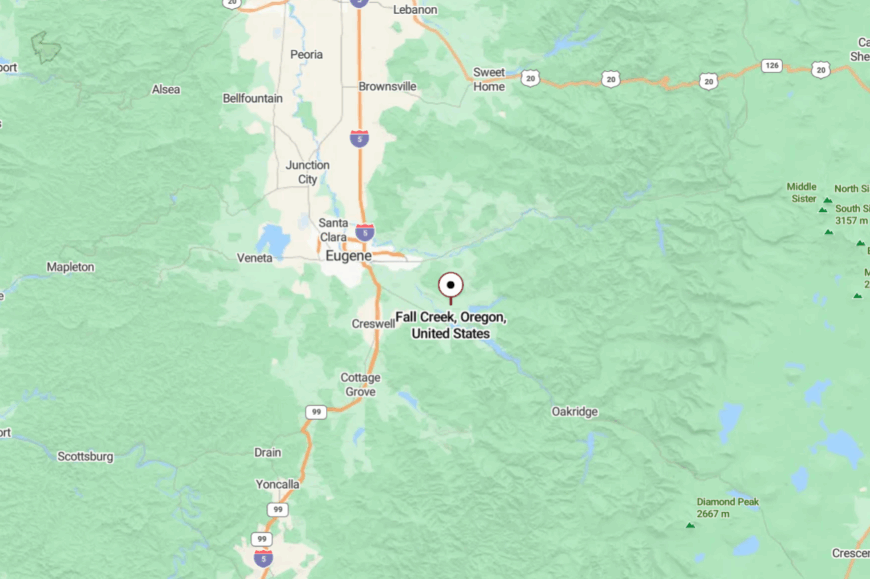
Fall Creek is nestled in Lane County, about 25 miles southeast of Eugene via Jasper-Lowell Road and Pengra Road. The route winds gently through forest and farmland, narrowing as it approaches the hills.
Along the way, the world seems to quiet with every mile. When you arrive, you’re deep in the hush of Oregon’s wooded heart.
12. Yachats River Valley: Where Ocean Meets Forest Solitude
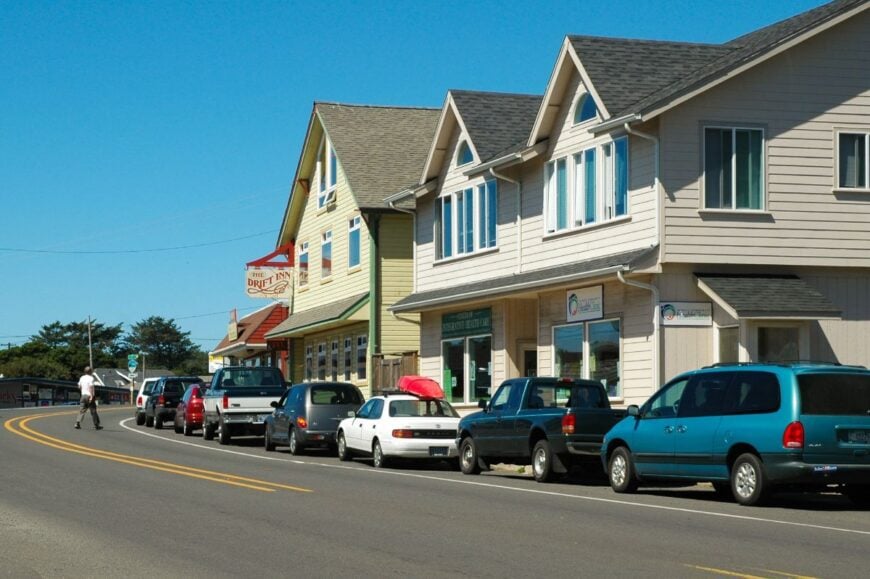
Just inland from Yachats’ popular coast lies a winding valley where fog rolls through evergreens and farms cling to the earth like stories passed down. The Yachats River Valley isn’t a formal town, but a string of homesteads and forest clearings along a quiet country road where solitude isn’t just possible—it’s essential.
Life is slow here—marked by river rhythms, goat bells, and garden plots. Deer watch from tree lines, and the forest always feels close enough to breathe. Artists, off-gridders, and caretakers of the land make up the invisible fabric of this place.
It’s not flashy, but it’s rich in hush. It’s the kind of place that reminds you how quiet the world can be.
Where is Yachats River Valley?

This secluded valley lies just east of the coastal town of Yachats in Lincoln County. You reach it by taking Yachats River Road inland, where the pavement eventually fades and gravel crunches under your tires.
The trees thicken, the air cools, and the world slips away behind you. It’s only minutes from the ocean—but it feels like the middle of nowhere.
11. Agness: Rugged and Remote Along the Rogue

Agness is a rugged riverside outpost, embraced by forest and far from convenience, where the Rogue River cuts through steep canyons and stories are passed by boat, not broadband. The town is a cluster of cabins, a tiny post office, and a historic lodge where rafters and fishermen trade tales by firelight.
It’s only reachable by one narrow road—or, better yet, by floating down the river. Wildlife roams freely, the stars are untouched by light pollution, and the silence is broken only by water and wind.
There’s no cell service, no rush, and certainly no pretense. It’s a place for those who want the wild to have the final word. It’s the kind of place that reminds you how quiet the world can be.
Where is Agness?
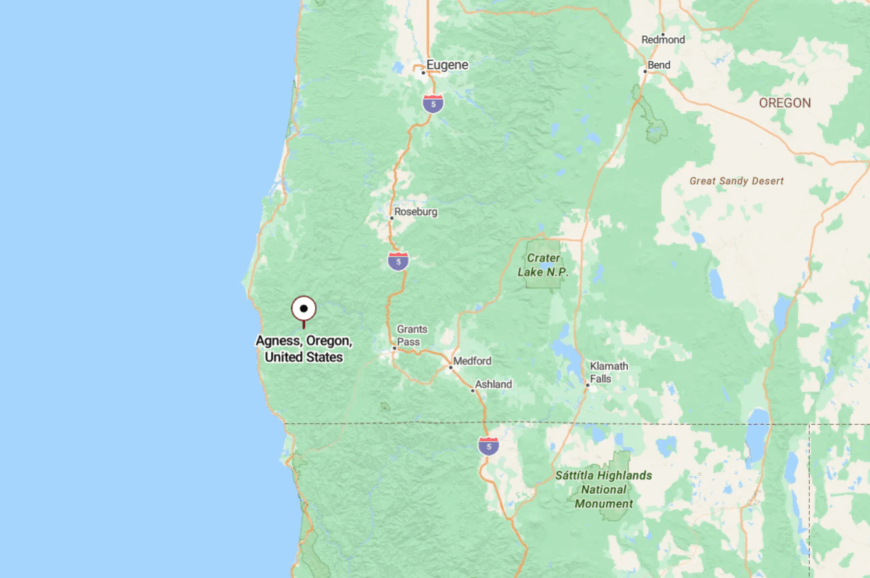
Agness lies in Curry County in the heart of the Rogue River-Siskiyou National Forest, about 30 miles east of Gold Beach. It’s reachable via a long, winding drive on narrow Forest Service roads—or, more famously, by boat.
The surrounding wilderness stretches for miles in every direction. When you arrive, you feel like you’ve found the end of the road—and the start of something older.
10. Camp Sherman: Fishing and Relaxation by the Metolius River

Camp Sherman, with a population of just over 200 residents, is a tranquil haven situated along the crystal-clear Metolius River. This idyllic community is a paradise for fishing enthusiasts, offering some of the best fly-fishing spots in the state.
Visitors can enjoy hiking and biking trails that wind through the lush pine forests or simply relax in the peaceful ambiance of the natural surroundings. The main industries here revolve around tourism and outdoor recreation, catering to those seeking a quiet escape.
The town’s seclusion is accentuated by its limited development and the absence of cell service, allowing guests to truly disconnect and immerse themselves in nature.
Where is Camp Sherman?

Located in Central Oregon, Camp Sherman is nestled in the Deschutes National Forest, approximately 14 miles northwest of Sisters. Its remote location amidst towering Ponderosa pines and proximity to the river contribute to its secluded atmosphere.
Accessible via a scenic drive along Highway 20 and then Forest Road 14, getting to Camp Sherman is a journey through some of Oregon’s most breathtaking landscapes. The surrounding wilderness and lack of urbanization make this town a perfect retreat from modern life’s distractions.
9. Wolf Creek: Step Back in Time in This Historic Forest Community

Wolf Creek, home to around 250 residents, is a quaint town steeped in history, nestled among Oregon’s dense pine forests. The community is famous for the historic Wolf Creek Inn, the oldest continuously operating hotel in the Pacific Northwest, which has hosted notable figures like author Jack London.
Visitors can explore nearby hiking trails, enjoy bird watching, or simply soak in the nostalgic charm of the town’s well-preserved 19th-century architecture. The primary industries include tourism and local artisanal crafts, contributing to its rustic appeal.
Wolf Creek’s seclusion is enhanced by its quiet streets and surrounding wilderness, offering a peaceful respite from urban life.
Where is Wolf Creek?

Wolf Creek is located in southwestern Oregon, along Interstate 5, about 20 miles north of Grants Pass. Despite its proximity to the interstate, the town feels tucked away due to its small size and the enveloping forests of the Klamath Mountains.
Access is straightforward via the Wolf Creek exit off I-5, but the tranquility of the area makes it seem worlds apart from the busy highway. The surrounding natural beauty and historical significance make Wolf Creek an ideal spot for those seeking a secluded getaway with a touch of the past.
8. Idanha: A Tiny Town Immersed in Oregon’s Scenic Wilderness

Idanha, with a population of approximately 140 people, is one of Oregon’s smallest incorporated cities, offering an intimate connection with nature. Situated along the banks of the North Santiam River, it’s a haven for outdoor enthusiasts interested in fishing, kayaking, and hiking in the nearby Willamette National Forest.
The town doesn’t have significant industry, relying mainly on tourism and small local businesses catering to visitors seeking solitude. Idanha’s seclusion stems from its small size, remote location, and the embracing forests that surround it, making it an ideal retreat for those looking to disconnect.
Where is Idanha?

Idanha is located in the Cascade Mountains, approximately 80 miles east of Salem along Oregon Route 22. The town’s remote position deep within the forested landscape contributes to its secluded nature.
Access is primarily via the scenic but winding highway that follows the North Santiam River, offering breathtaking views along the way. The isolation and the serene environment make the journey to Idanha as much a part of the experience as the destination itself.
7. Blue River: Nature’s Paradise Along the McKenzie River

Blue River, an unincorporated community with around 75 residents, is nestled along the McKenzie River, renowned for its turquoise waters and lush surroundings. The area is a paradise for hiking, mountain biking, and especially water activities like rafting and fishing.
While the town itself is small, it serves as a gateway to the Willamette National Forest and attractions like the Sahalie and Koosah Falls. There are minimal industries, with a focus on outdoor recreation and a few local establishments serving visitors and residents.
The seclusion of Blue River is underscored by its intimate size and the enveloping forest that offers a sanctuary away from urban bustle.
Where is Blue River?

Blue River is situated in Lane County, about 40 miles east of Eugene along Highway 126. The town is tucked into the western slopes of the Cascade Range, surrounded by dense forests and close to the Three Sisters Wilderness area. The drive to Blue River is scenic, following the course of the McKenzie River amidst towering evergreens. Its remote location and limited development make it an ideal spot for those seeking tranquility and a deep connection with nature.
6. Union Creek: A Historic Village in the Shadows of Crater Lake

Union Creek, though not a formal town, is a historic community with a handful of residents and a rich history dating back to the early 1900s. Known for the Union Creek Resort, this area offers rustic lodging and is a favorite among visitors to nearby Crater Lake National Park.
Activities include hiking to the Rogue River Gorge, exploring the natural bridge formations, and enjoying the tranquility of the old-growth forests. The primary industry is tourism, centered around outdoor recreation and the historic lodge.
Union Creek’s seclusion is due to its remote location within the Rogue River-Siskiyou National Forest and limited development, providing a peaceful retreat.
Where is Union Creek?

Located in southern Oregon, Union Creek is about 23 miles northwest of Crater Lake along Oregon Route 62. The area is enveloped by dense forests and is a stone’s throw from some of the state’s most stunning natural attractions.
Getting there involves a scenic drive through mountainous terrain, reinforcing the sense of isolation. The proximity to Crater Lake yet the sparse population make Union Creek a secluded gem for travelers seeking both adventure and serenity.
5. Powers: The Secluded Gem of the Coast Range Mountains

Powers is a small city with a population of approximately 680 people, nestled deep within the Coast Range Mountains. The town is a gateway to the Siskiyou National Forest, offering abundant opportunities for hiking, camping, and exploring the rugged wilderness.
Powers hosts the annual White Cedar Days festival, celebrating its logging heritage, which remains a significant part of the local economy alongside small-scale agriculture.
The town’s secluded nature is due to its remote location and the surrounding dense forests, making it a peaceful haven away from the crowds.
Where is Powers?

Powers is situated in southwestern Oregon, about 50 miles south of Coos Bay. Accessed mainly via winding mountain roads like County Road 219 from the town of Myrtle Point, the journey to Powers is through scenic landscapes of the Coast Range.
The lack of major highways and its tucked-away position in the mountains contribute to its seclusion. For those willing to venture off the beaten path, Powers offers a tranquil retreat immersed in natural beauty.
4. Glide: Where Two Rivers Meet in a Forested Wonderland

Glide is a small community with around 1,800 residents, known for its picturesque setting at the confluence of the North Umpqua and Little Rivers. The area is famed for the Colliding Rivers viewpoint, where these two rivers meet head-on, a rare and mesmerizing natural phenomenon.
Outdoor activities abound, including fishing, hiking the North Umpqua Trail, and visiting nearby waterfalls like Toketee Falls. Glide’s industries are primarily tied to forestry and outdoor tourism.
Its seclusion is attributed to its location within the dense Umpqua National Forest and the absence of urban development.
Where is Glide?

Glide is located in Douglas County, approximately 20 miles east of Roseburg along Oregon Route 138. Nestled in the foothills of the Cascade Mountains, the community is encircled by lush forests and accessible via a scenic drive through rolling hills and tree-lined roads.
The town’s proximity to vast wilderness areas and the lack of urban sprawl make it a secluded destination for nature lovers and those seeking a peaceful environment.
3. Vernonia: Discover Rustic Charm Amidst Towering Evergreens

Vernonia, with a population of about 2,200, is a small city that exudes rustic charm amid Oregon’s lush forests. It’s a former logging town that has retained much of its historic character, evident in its preserved buildings and local museums.
Outdoor enthusiasts can enjoy the Banks-Vernonia State Trail, a 21-mile path perfect for hiking, biking, and horseback riding. The local economy has shifted from logging to tourism and small businesses, creating a close-knit community feel.
Vernonia’s seclusion comes from its location in the Nehalem River Valley, surrounded by the expansive Tillamook State Forest.
Where is Vernonia?

Situated in Columbia County, Vernonia is about 50 miles northwest of Portland. The town is accessible via Highway 47, but the journey winds through forests and farmlands, offering a sense of retreat from urban centers.
The enveloping evergreens and the town’s valley setting enhance its secluded ambiance. Vernonia’s combination of natural beauty and small-town charm makes it a perfect escape for those looking to unwind in a peaceful setting.
2. Detroit: A Lakeside Retreat in the Heart of Oregon’s Wilderness

Detroit is a small city with a population of approximately 200 residents, beautifully situated on the shores of Detroit Lake. The town is a popular destination for boating, fishing, and camping, especially during the summer months when the lake is at its fullest.
Despite a devastating wildfire in 2020, the resilient community continues to rebuild and welcome visitors. The primary industries revolve around tourism and outdoor recreation.
Detroit’s seclusion is accentuated by its location in the Cascade Mountains and the surrounding Willamette National Forest, providing a serene environment for visitors and residents alike.
Where is Detroit?

Detroit is located about 50 miles east of Salem along Oregon Route 22. The drive to the town is through mountainous terrain and dense forests, contributing to its sense of isolation. The surrounding wilderness areas and limited accessibility enhance Detroit’s secluded atmosphere.
Despite its remote location, the town remains a beloved destination for those seeking the tranquility of lakeside living amidst Oregon’s natural beauty.
1. Oakridge: A Hidden Mountain Biking Haven Nestled in Lush Forests

Oakridge, with a population of around 3,200, is a hidden gem known as the “Mountain Biking Capital of the Northwest.” Surrounded by the Willamette National Forest, it boasts over 300 miles of world-class trails attracting cyclists from all over. Beyond biking, visitors can enjoy hiking, fishing in the nearby rivers and lakes, and exploring the diverse ecosystems.
Historically a timber town, Oakridge has transitioned to focusing on outdoor recreation and tourism while still honoring its logging roots. The town’s seclusion is due to its mountainous surroundings and distance from major urban centers, providing a serene backdrop for outdoor adventures.
Where is Oakridge?

Oakridge is located in Lane County, approximately 45 miles southeast of Eugene along Highway 58. Nestled at the base of the Cascade Range, the town is enveloped by dense forests and mountain peaks.
The journey to Oakridge offers scenic views of rivers and woodlands, enhancing the feeling of entering a secluded haven. Its remote setting and abundant natural resources make Oakridge an ideal destination for those seeking both adventure and tranquility away from the city’s hustle.





